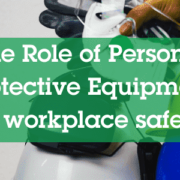Volenti Non Fit Injuria is still a valid defence in the 21st century
Should workers be able to sign away the right to damages?
Recently I attended a training course with other health and safety professionals; as is usually the case with such events, at some point the conversation veered off into personal anecdotes and discussion of shared professional challenges. We were discussing difficulties with getting employees to wear PPE and I told the story of an ex-colleague called Danny.
Danny worked for the maintenance department of a local manufacturer, he was well into his 60’s and performed mostly non-technical odd jobs and basic maintenance visual checks. To do this Danny had to enter areas where hearing protection was mandatory, but Danny did not wish to wear hearing protection of any kind (we had 7 different types for him to choose from). He viewed the requirement to do so as an infringement of his human rights; “I own my body” he used to say. He recognised the danger to his hearing, but given the choice would have gladly accepted the consequences of exposing himself to high noise levels.
I had many debates with Danny about this, all of them amicable I’m happy to say. I explained to him that the Health and Safety at Work etc. Act 1974 imposes a duty on employers to protect workers from work-related risks to health. Under the same legislation Danny has a legal duty to co-operate with his employer on this, therefore Danny had to wear the hearing protection. If he did not, then we would be required to take disciplinary measures.
Danny offered to sign a disclaimer absolving us of all legal responsibility for any future damage to his hearing. I told him that such disclaimers have no basis in law. “You cannot sign away someone else’s legal responsibilities” I told Danny, and I followed up with “If you disagree, then write to your MP!”. Not my most persuasive moment, I admit.
Telling this story years later, I expressed to my peers how I had wished that I could let Danny sign that disclaimer. Since Danny is well aware of the risks, is volunteering to take the risk and the legal liability, why should he be forced to act against his will?
It is not just a legal question, this is about ethics and morality.
One of my H&S peers responded: “Volenti Non Fit Injuria hasn’t been around since the 19th century. Do you really think it is a good idea to bring it back?”
What is Volenti Non Fit Injuria?
Volenti Non Fit Injuria is a legal defence in civil law in the UK, it translates from Latin as “to one who volunteers, no harm is done”. It is widely believed that volenti non fit injuria is no longer a possible defence, and that case law decisions in the 19th century now made it impossible to use. However, in actual fact it has been regularly used, not always successfully, throughout the 20th century, and continues to be used today.
The requirements of the defence are that the employee enters into a voluntary (1st test) agreement (2nd test), made in full knowledge of the nature and extent of the risk (3rd test).
- Voluntary: the agreement must be freely entered into. If the employee is coerced in any way then the defence will not succeed. In Smith v Charles Baker and Son (1891) the defence failed because the claimant had complained about the dangerous practice. It was judged that his continuing to work did not imply a voluntary acceptance of the risk. If you tell someone to “get on with it or go home” then this is not considered voluntary.
- Agreement: the employee must be willing to accept both the physical and legal risks. They must waive any claim for any injury that could occur due to the lack of reasonable care on the part of the employer.
- Knowledge: the employee must have full knowledge of the nature and extent of the risk. In Morris v Murray 1991 the volenti defence was allowed. The defendant and the claimant had been drinking all day. The defendant had a pilot licence and a small aircraft, and it was decided that they would take the aircraft for a flight. They crashed. The defendant died, and the claimant was seriously injured. An autopsy revealed that the defendant had consumed the equivalent of 17 whiskeys. In the subsequent court case the defendant used the defence of volenti. This was allowed since to accept to ride in an aircraft where the pilot is so obviously and heavily inebriated is glaringly dangerous, and would be the equivalent of knowingly walking off the edge of a cliff.
The volenti defence has been used in a wide variety of different cases, including trespassers, participation in sports, spectators of sporting events, suicide, rescuers and drink driving. However, the courts do prefer to apportion loss through contributory negligence. They are generally reluctant to apportion all of the liability on the claimant, but if the three conditions can be fulfilled, volenti is still accepted in many types of cases, including the typical employee/employer accident injury claims.
Danny, bring me that disclaimer.
Will Taylor





Leave a Reply
Want to join the discussion?Feel free to contribute!